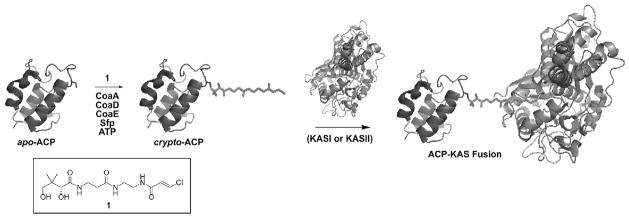Figure 1.
The carrier protein–ketosynthase crosslinking reaction. ACP is loaded with a prosthetic phosphopantetheinyl group through the actions of the ATP-dependent CoA biosynthetic enzymes and Sfp in the one-pot chemo-enzymatic synthesis. The structure of the chloroacrylate pantetheine analog (1) used in these crosslinking studies is also shown. Protein-protein affinity allows the active site cysteine of the KS domain (KASI or KASII) to attack the trans-chloroacrylate functionality, thereby forming a covalent bond to crosslink ACP to KS.

